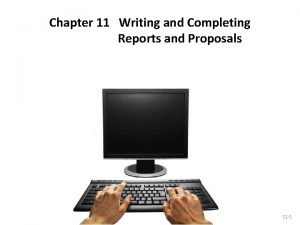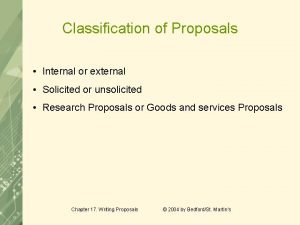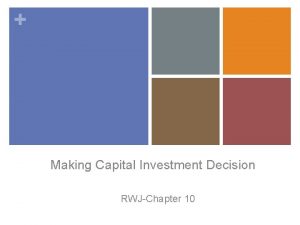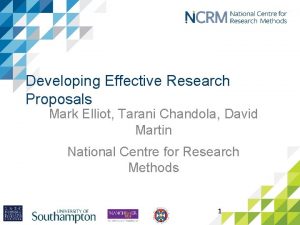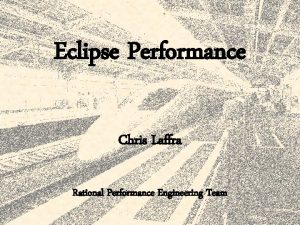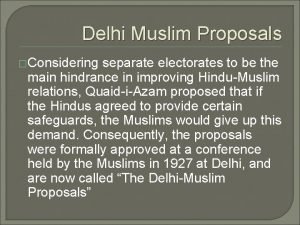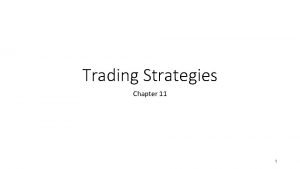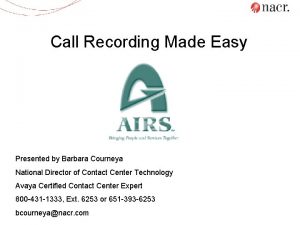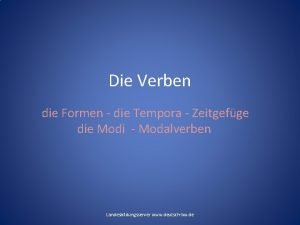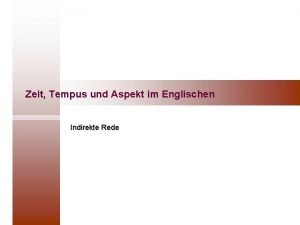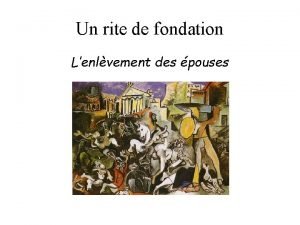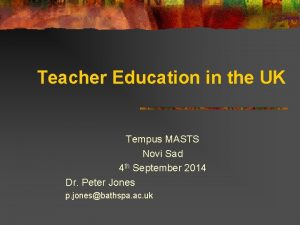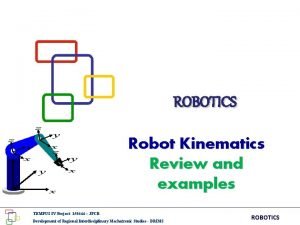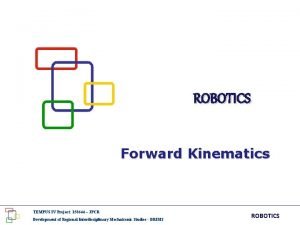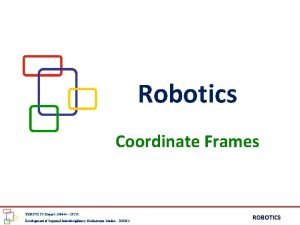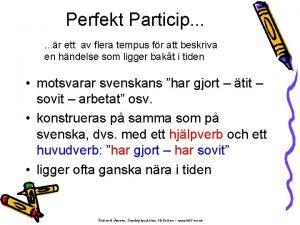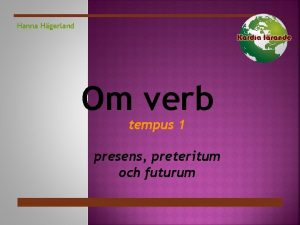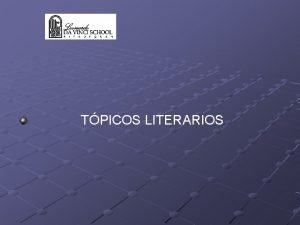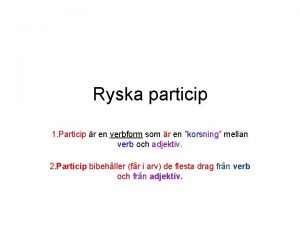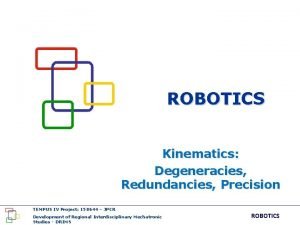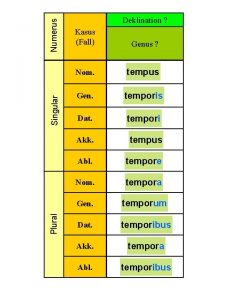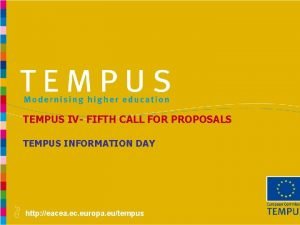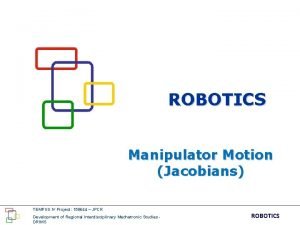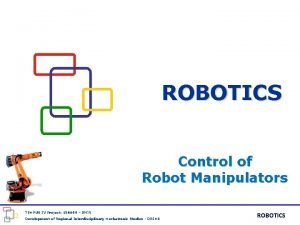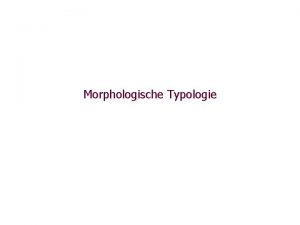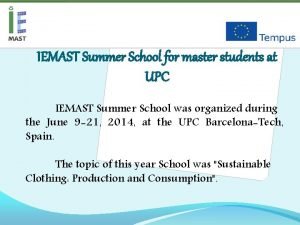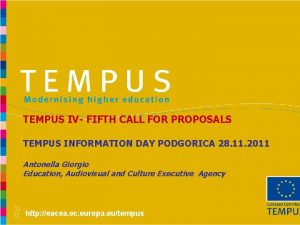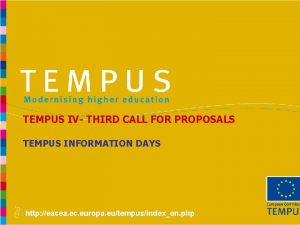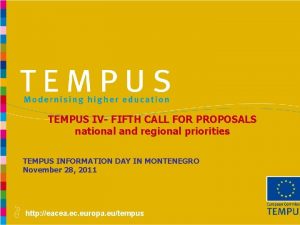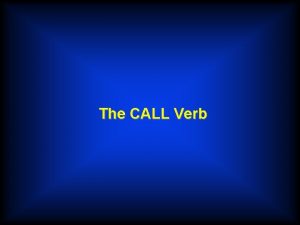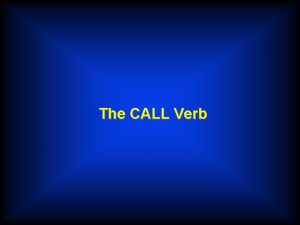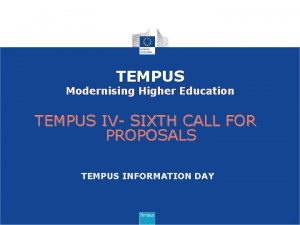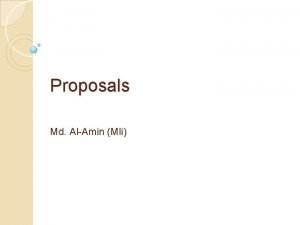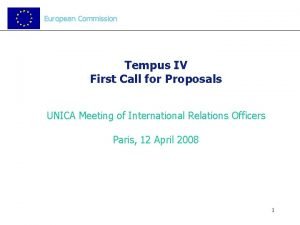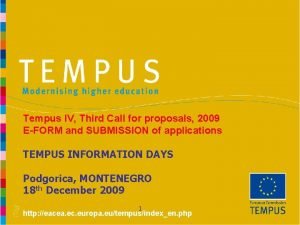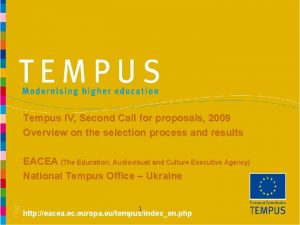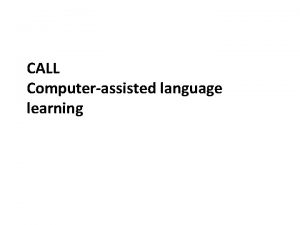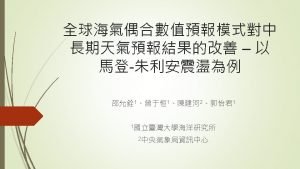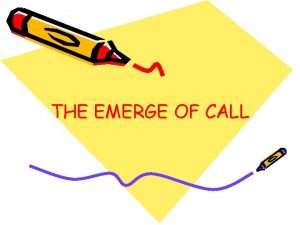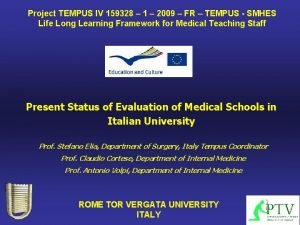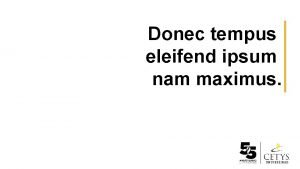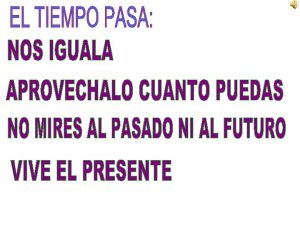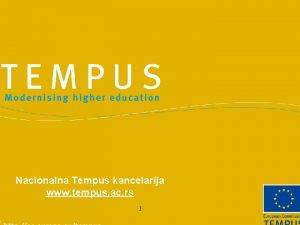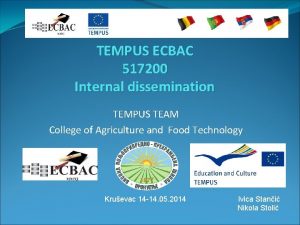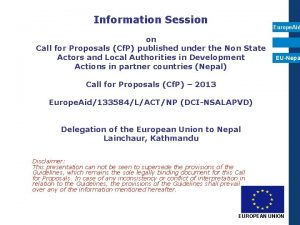TEMPUS IV FIFTH CALL FOR PROPOSALS TEMPUS INFORMATION



















































- Slides: 51

TEMPUS IV- FIFTH CALL FOR PROPOSALS TEMPUS INFORMATION DAY http: //eacea. ec. europa. eu/tempus

Outline of the presentation • Part I: Basic features of the Tempus programme • Part II: Results of the 4 th call for proposals • Part III: Novelties under the 5 th call for proposals • Part IV: Simplified submission procedure • Part V: Steps in the selection process and recruitment of experts http: //eacea. ec. europa. eu/tempus

Part I Basic features of the Tempus programme

BASIC FEATURES OF TEMPUS IV Objectives: Ø To support the modernisation of Higher Education in Partner Countries of the surrounding area of the EU and Central Asia Ø To establish an area of cooperation between the European Union (EU) and the Partner Countries. Ø To favour voluntary convergence with the EU developments in the field of Higher Education. http: //eacea. ec. europa. eu/tempus

BASIC FEATURES (II) Approach: • Institutional cooperation. • Bottom-up programme mainly implemented through calls for proposals seeking projects targeting reforms in higher education institutions and/or systems. • Strong involvement of national authorities. • Strong accent on dissemination, sustainability and exploitation of results. • Complements other EU mobility programmes (e. g. Erasmus Mundus). http: //eacea. ec. europa. eu/tempus

BASIC FEATURES (III) Local Support: Ø National Contact Points (NCPs) in EU Member States Ø National Tempus Offices (NTOs) in Partner Countries (PCs) http: //eacea. ec. europa. eu/tempus

3 TYPES OF ACTIONS Ø Joint Projects: implemented at institutional level to reform curricula, improve university governance, create more links with society. Ø Structural Measures: implemented at national level for the development and reform of national higher education structures and systems in Partner Countries. Ø Accompanying Measures: dissemination and information activities (conferences, studies, exchange of good practice, National Tempus Offices, Higher Education Reform Experts, etc. ) http: //eacea. ec. europa. eu/tempus

GRANT SIZE = € 500 000 to € 1 500 000 § For both Joint Projects and Structural Projects. § Minimum grant size for national projects from Montenegro and Kosovo: € 300, 000. § Minimum co-financing: 10% PROJECT DURATION = 24 or 36 months http: //eacea. ec. europa. eu/tempus

ELIGIBLE PARTNERSHIPS National projects: Multi-country projects: (targeting 1 single Partner Country) (targeting more than 1 Partner Country) minimum of 6 Higher Education Institutions minimum of 7 Higher Education Institutions 3 from the involved Partner Country 2 from each involved Partner country (minimum 2 PC) 3 from 3 different EU countries http: //eacea. ec. europa. eu/tempus

ELIGIBLE APPLICANTS Joint Projects: § State-recognised public or private Higher Education Institutions (either in EU or PC) § Associations, organisations or networks of Higher Education Institutions Structural Measures: § State-recognised public or private Higher Education Institutions (either in EU or PC) § Associations, organisations or networks of Higher Education Institutions § Rector/teacher/student organisations http: //eacea. ec. europa. eu/tempus

ELIGIBLE PARTNERS § State-recognised public or private HE institutions (either in EU or PC) § Associations, organisations or networks of HE institutions § Rector/teacher/student organisations § Non-governmental organisations § Social partners and their training organisations § Private and public enterprises § Research institutions § Public administrations (Ministries, other national/regional/local administrations) or governmental organisations BUT with special funding conditions (only their travel costs and costs of stay can be reimbursed by the Grant ) http: //eacea. ec. europa. eu/tempus

ELIGIBLE PARTNERS Additional condition for Structural Measures Ø The Ministries responsible for higher education in each Partner Country must be involved as full partner. Ø BUT under special funding conditions. http: //eacea. ec. europa. eu/tempus

ELIGIBLE ACTIONS Themes structured around the main components of the modernisation agenda for higher education. Ø Joint projects: § Curriculum reform § Governance reform § Higher Education and Society Ø Structural measures § § Governance reform Higher Education and Society http: //eacea. ec. europa. eu/tempus

PROGRAMME THEMES v Curricular reform ü Modernisation of curricula: ECTS, 3 cycles, recognition of degrees v Governance reform ü ü ü University management and student services Introduction of quality assurance Institutional and financial autonomy & accountability Equal access to HE Development of international relations v Higher Education and Society ü ü ü Training of non-university teachers Development of partnerships with enterprises Knowledge triangle education/research/innovation Training courses for public services (Ministries/local authorities) Development of lifelong learning Qualifications frameworks http: //eacea. ec. europa. eu/tempus

NATIONAL AND REGIONAL PRIORITIES National projects (targeting 1 single Partner Country) Ø Focus on the national priorities set for the Partner Country. Ø Defined by the Ministries of Education in close consultation with the European Union Delegations. http: //eacea. ec. europa. eu/tempus

NATIONAL AND REGIONAL PRIORITIES Multi-country projects (targeting more than 1 Partner Country) Ø Focus on the regional priorities common to all PCs within a specific region. Ø Based on strategic documents of European Commission. Ø Can address a national priority which is common to all participating PCs. Ø Cross regional cooperation: Possible if theme of the proposal is identified as a regional or national priority for all the participating PCs. http: //eacea. ec. europa. eu/tempus

Priority given to project proposals that: Ø Demonstrate a wide impact on higher education institutions and systems. Ø Involve a representative number of higher education institutions from a Partner Country. Ø Structural Measures projects. Ø Multi-country projects, when cooperation is relevant and justified by detailed analysis of common needs and objectives and the choice of the countries coherent with the objectives proposed. Ø Projects actively involving students, women, enterprises, social partners, research institutions, Ministries of Education, NGOs and other non-academic organisations http: //eacea. ec. europa. eu/tempus

Part II Fourth call for proposals Overview on the selection process and the results http: //eacea. ec. europa. eu/tempus

Total number of applications received 2011 Ø Received applications § 525 proposals § 102 (19. 5%) PC applicants 600 500 102 400 90 PC applicants 300 423 200 Received applications 100 0 2011 2010 360 2010

Breakdown of applications by target region (2011 vs 2010) 2011 2010 Central Asia 71 52 50 35 Eastern Europe 81 86 217 105 Mediterranean countries Western Balkans 178 106 Multi-regions

Breakdown of applications according to type 2010 2011 7% 9% 8% 6% JPCR JPGR 49% 45% JPHES 29% 33% SMGR SMHES 7% 7%

Breakdown of applications on subject areas

Overview on selection progress (1) 600 525 500 477 450 400 353 318 2010 300 2011 204 174 200 100 64 63 0 Received applications Eligible proposals Above the 50% threshold Proposed for consultation Recommended for funding

Overview on selection progress (2) Received applications Eligible proposals Above the 50% threshold Proposed for consultation Recommended for funding Western Balkans 86 82 61 41 18 South Neighbouring area 105 92 68 33 15 Eastern Neighbouring area: Regional + Russian Federation 212 133+61 103+46 33+14 10+6 Central Asia 52 46 29 20 8 Multiregional 70 63 46 33 6 477 353 174 63 91% (from total received) 70% (from eligible applications) 49% (from scored > 50) 36, 48% (from eligible) 12% (from total) 36, 2% (from projects sent to consultation) REGION TOTAL Selection TOTAL 525 2010 64 450 400 318 204 31. 37% (from projects sent to consultation)

Applications coordinated by EU Member States in selected projects 12 10 10 8 7 6 6 6 5 4 3 3 2 2 1 1 1 NL PL 1 1 RO SI 0 AT BE BG CY CZ DE DK EE EL ES FI FR HU IE IT LV LT LU MT PT SE SK UK

Participation of EU Member States organisations in selected projects 40 36 35 33 29 30 27 24 25 20 16 16 15 15 11 9 10 8 7 6 6 5 5 2 9 6 5 2 0 0 8 7 1 0 AT BE BG CY CZ DE DK EE EL ES FI FR HU IE IT LV LT LU MT NL PL PT RO SI SE SK UK

Applications coordinated by Partner Countries in selected projects 7 6 6 5 4 3 2 2 1 1 KZ LB 1 1 0 AL AM AZ BA BY DZ EG GE IL JO KG LY MA MD ME PS RS RU SY TJ TM TN UA UZ XK 1244

Participation of Partner Countries organisations in selected projects 100 92 86 90 80 70 62 60 49 50 40 40 26 30 21 20 20 19 13 7 10 14 11 18 17 5 24 20 13 13 9 8 20 5 3 10 9 4 24 Z -1 U XK A U TN TM TJ SY U R S R PS M E D M M A LY LB KZ KG JO IL E G EG Z D BY BA AZ AM AL 0

Number of projects in which institutions from Partner Countries are involved in (regional) Region Total National Multi-country JP SM IPA 18 10 8 13 5 ENPI East (regional allocation) 16 4 12 13 3 Russia (bilateral allocation) 6 6 0 4 2 ENPI South 16 8 8 13 3 DCI 13 4 9 9 4 TOTAL Number of projects selected* 63 33 30 48 15 * These figures cannot be added, as several regions can be involved in the same project. The totals include the multiregional projects.

Selection Conclusions Summary results 63 proposals recommended for funding 13 proposals have Partner Countries as coordinator (21% of the selected projects) 48 Joint Projects 15 Structural Measures (24% of the selected projects) 33 national projects 30 proposals are multi-country (48%) € 818. 000 = average budget size Average consortium size = 12

Selection Results/Tempus IV 1 st Call 2 nd Call 3 rd Call 4 th Call Proposals recommended for funding 76 69 64 63 Proposals with Partner Country co-ordinators 18 15 18 13 (23, 6%) (21%) (28%) (21%) 63 50 50 48 (82, 8%) (72, 5%) (78%) (76%) 13 19 14 15 (17, 2%) (27, 5%) (22%) (24%) 46 34 31 30 (60, 5%) (49%) (48%) 30 35 33 33 (39, 5%) (51%) (52%) Joint Projects Structural measures Multi-country projects National projects

Part III Novelties of the fifth call for proposals http: //eacea. ec. europa. eu/tempus

TEMPUS IV Indicative budget for projects selected under 5 th Call: 78, 1 € million (60% increase compared to 2011) Southern Mediterranean € 22. 8 million* * Plus an additional amount of € 6. 25 million under the reserve that the relevant financing decision is adopted by the European Commission. Eastern Europe/Caucasus (Russia not included) Bilateral allocation for Russia (for national and multi-country projects involving Russia) Western Balkans € 22. 8 million* * Plus an additional amount of € 6. 25 million under the reserve that the relevant financing decision is adopted by the European Commission. € 8. 5 million € 14. 5 million Albania € 1. 9; Bosnia and Herzegovina € 2. 3; Montenegro € 1. 2; Serbia: € 6. 6; Kosovo under UNSC Resolution 1244/99: € 2. 5 Central Asia € 9. 5 million http: //eacea. ec. europa. eu/tempus

Novelties under the 5 th Call for proposals ü Terminology/Clarification – e. g. , required level of higher education institutions (ISCED 5 and 6 levels); legal representative of an institution ü Clarification related to the status of HEI – Faculties/ Depts. / Centres part of a HEI, even if established as autonomous legal entities, cannot count for a partner / applicant. Main changes: ü National priorities – update + harmonisation of subject area titles with the Call ü Budget – significant increase, i. e. ENPI South and East and Russia http: //eacea. ec. europa. eu/tempus

Novelties under the 5 th Call for proposals ü Associations of HEI acting as applicant will need at least two higher education institutions which are not member of the association to participate in the consortium ü Submission procedure – paper copy of e. Form not required any more. All administrative documents can be copies or scanned version (Declaration of Honour in ORIGINAL) ü Financial conditions – increase of rates for cost of stay during mobility periods for Partner Country staff within their own country and for monthly rates for student costs of stay in a European Union country and in the Partner Country. ü Sub-contracting – All subcontracting costs should be booked under "Other costs" budget heading. http: //eacea. ec. europa. eu/tempus

Part IV Simplified submission procedure

Submission of the applications: E-form Ø One-phase submission, Ø one deadline February 2012, Ø two steps: 1 - On-line submission of the e. Form, including 3 mandatory annexes (Declaration of Honour, Workplan and Budget Excel and Logical Framework Matrix) is considered to be the unique reference information for the submission deadline. 2 - Administrative and legal documents by post. NO paper copy of the eform is needed anymore. http: //eacea. ec. europa. eu/tempus

Submission of the applications: E-form Step 1: On-line submission of the e. Form Ø Complete and validate the e. Form + correct mistakes Ø Attach the mandatory annexes: § § § Declaration of Honour Workplan and Budget Excel Table Logical Framework Matrix Ø Click on SUBMIT button of the e. Form and an automatic notification is sent with the project Reference number

Submission of the applications: E-form Step 2: Administrative and legal documents by post Ø Copy the Project reference number on each of the following documents: § § § Declaration of honour by the legal representative of the applicant organisation Legal entity form Bank identification form Profit and loss accounts/ Balance sheet (if applicable) Mandates Ø Send the complete application package, by the deadline of February 2012 as defined in the Call (date of postmark), using registered post to the Agency postal address mentioned in the Call for proposals. Ø Only the Declaration of honour needs to be signed in original. Copied/scanned versions are accepted for all other documents, even in case the project is selected. HOWEVER originals must be kept by the applicant administration. http: //eacea. ec. europa. eu/tempus

Sources of guidance § The Instructions (for completing the Application form and the Budget Tables) ð Rules and guidance on e. Form content and the entire application process § The e. Form User Guide ð Help with the technical aspects of completing the e. Form § Still need further assistance. . . ? EACEA-TEMPUS-CALLS@ec. europa. eu

Part V Selection steps and recruitment of experts

Indicative roadmap for selection process – 5 th Call for proposals Date Steps Publication of Fifth Tempus IV Call for Proposals October 2011 Deadline for submission of applications February 2012 Expert assessment March - April 2012 Consultation of Ministries of Education in Partner Countries, EU Delegation and National Tempus offices May 2012 Award decision and publication of results July 2012 Preparation and signature of grant agreements July to September 2012 Start of eligibility period 15 October 2012 http: //eacea. ec. europa. eu/tempus

The Call requirements The selection process is based on the assessment of applications against 4 types of criteria: v v Eligibility Criteria Exclusion Criteria Selection Criteria Award Criteria 43

Eligibility criteria v Formal submission requirements v Grant size and duration v Applicant, Partners and Partnership requirements (number of partners, status of the grant applicant & partners, etc. ) v National & regional priorities tter a m t no s e has o t d c e j It pro ot n e h s t e l l o e d how w signed if it criteria: e ty been dthe eligibili to the fulfil is will lead ion of the th ect j e r c i at l autom proposa

Main reasons for rejection on formal criteria 2011 Out of 525 receive projects, 48 were rejected for not complying with eligibility criteria: ý Minimum number of higher education institutions ý Applicant nature ý Obligation to provide legal supporting documents (Mandates) ý Relevant Parts of the application not completed (work plan and budget tables)

Exclusion and Selection criteria v The institution is not in one of the situations described in section 6. Exclusion criteria of the Guidelines (such as bankruptcy, profession misconduct, subject of fraud, corruption, administrative penalty, conflict of interest, etc) v Legal person status of the applicant organisation v Financial capacity to complete the proposed activities v Operational capacity to complete the proposed activities nd a g n i t por ments, p u s n o cu Based strative do tion of i a admin the declar tity form, like , legal en ts. . . n u o r c honou and loss ac profit

Award criteria Five award criteria defined in the Call and assessed by external experts: v Relevance (25%) v Good quality partnership (20%) v Quality of the project’s content and methodology (25%) v Dissemination & Sustainability (15%) v Budget and Cost-effectiveness (15%)

Project assessment by external experts Briefing session v Two day briefing on site: general and specific presentations, one day assessment simulation, based on case study (team work) & handbook, debriefing Assessment v Each application assessed by two different experts, by teleworking, supported by the Agency’s on-line assessment tool v 1 st stage: Each expert carried out individual assessment v 2 nd stage: the 2 experts assessing the same proposals consensus discussions consolidated judgements and scores v Lead-experts - mediate consolidations, ensure quality assessment outputs; perform 3 rd assessment wherever consensus is not reached Debriefing panel with experts v Discussion on the quality of the proposals v Suggestions for improvement of the evaluation process

Selection of external experts v v Currently 400 experts names in database covering nationals from EU &Tempus Partner Countries 30% renewal each year, out of which 10% completely new experts An expert can assess Tempus projects maximum three years consecutively Lack of conflict of interest duly checked and respected Criteria: v Professional experience in thematic areas covered by applications v Competences in at least two of the Tempus working languages: EN, FR, DE v Proved expertise in project cycle management, Tempus Programme and cooperation with the Tempus Partner Countries / Regions v Knowledge of the higher education modernisation agenda

Recruitment of external experts for the assessment of project proposals Ø Establishment of a list of experts from EU and Partner countries to assist in the framework of the management of the EU programmes in the fields of education. Ø Call for expression of interest published by the Agency Ø Applications at any time, with a deadline on 30 June 2013 Ø Update of the lists of eligible experts: twice a year More information: http: //eacea. ec. europa. eu/about/call_experts_2007_en. php

More on: http: //eacea. ec. europa. eu/tempus
 Writing thesis and dissertation proposals
Writing thesis and dissertation proposals Writing and completing reports and proposals
Writing and completing reports and proposals Writing and completing reports and proposals
Writing and completing reports and proposals Formal business report
Formal business report Artificial intelligence thesis proposals
Artificial intelligence thesis proposals Solicited internal
Solicited internal Nature and use of fire insurance
Nature and use of fire insurance When evaluating cost-cutting proposals
When evaluating cost-cutting proposals Developing effective research proposals
Developing effective research proposals Eclipse computing proposals slow
Eclipse computing proposals slow Delhi muslim proposals
Delhi muslim proposals Covered call payoff diagram
Covered call payoff diagram What is options
What is options Gartner magic quadrant call recording
Gartner magic quadrant call recording Who of the following was not part of the bebop generation?
Who of the following was not part of the bebop generation? Vestibulum congue tempus
Vestibulum congue tempus Indikativ
Indikativ Erlebte rede beispiel
Erlebte rede beispiel Referenzzeit
Referenzzeit Ubi spectaculi tempus venit
Ubi spectaculi tempus venit Tempus novi sad
Tempus novi sad Tempus
Tempus Kinematics
Kinematics Ouvw
Ouvw Right hand rule robotics
Right hand rule robotics Perfekt tempus
Perfekt tempus Verb tempus övningar
Verb tempus övningar La falsa modestia topico
La falsa modestia topico Who made
Who made Vestibulum congue tempus
Vestibulum congue tempus Tempus perfectum prolatio maior
Tempus perfectum prolatio maior Particip 1
Particip 1 Drive
Drive Tempus robotics
Tempus robotics Tempus robotics
Tempus robotics Adventus deklination
Adventus deklination Tempus programme
Tempus programme Tempus robotics
Tempus robotics Tempus robotics
Tempus robotics Genus neutrum
Genus neutrum Summer school upc
Summer school upc Iso 22301 utbildning
Iso 22301 utbildning Typiska drag för en novell
Typiska drag för en novell Tack för att ni lyssnade bild
Tack för att ni lyssnade bild Vad står k.r.å.k.a.n för
Vad står k.r.å.k.a.n för Varför kallas perioden 1918-1939 för mellankrigstiden
Varför kallas perioden 1918-1939 för mellankrigstiden En lathund för arbete med kontinuitetshantering
En lathund för arbete med kontinuitetshantering Underlag för särskild löneskatt på pensionskostnader
Underlag för särskild löneskatt på pensionskostnader Tidbok för yrkesförare
Tidbok för yrkesförare Sura för anatom
Sura för anatom Förklara densitet för barn
Förklara densitet för barn Datorkunskap för nybörjare
Datorkunskap för nybörjare


